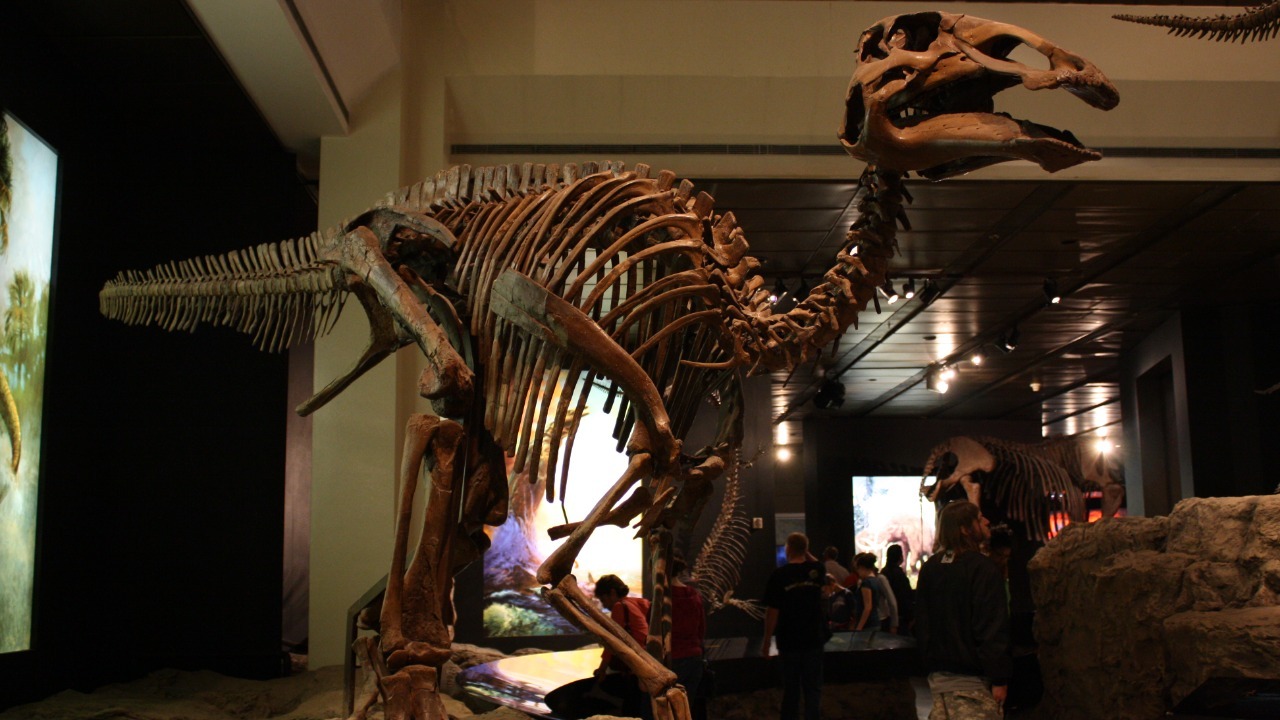
Exceptionally preserved “dinosaur mummies” of the duck-billed Edmontosaurus have unveiled the first-known reptile hooves, offering unprecedented insights into their appearance. These remarkable specimens, encased in thin clay layers, provide a rare glimpse into the soft tissues and structures of these ancient creatures. The discovery challenges previous understandings of reptilian locomotion and highlights the unique anatomical features of duck-billed dinosaurs.
Discovery of the Dinosaur Mummies
The initial unearthing of these exceptionally preserved “dinosaur mummies” took place in fossil-rich deposits, where the role of thin clay layers was crucial in their preservation. Found in a state that included preserved flesh and skin impressions, these Edmontosaurus specimens stand apart from typical skeletal fossils. The physical state of these mummies allowed scientists to identify unprecedented details, such as surface textures and limb structures, which were previously unknown. Early field reports emphasized the significance of these findings, noting how they contribute to a deeper understanding of dinosaur anatomy and evolution.
The discovery site, rich in fossil deposits, provided an ideal environment for the preservation of these mummies. The thin clay layers that encased the remains played a pivotal role in maintaining the integrity of the soft tissues. This preservation method has allowed researchers to explore the intricate details of the Edmontosaurus, offering insights that skeletal fossils alone could not provide. The presence of preserved flesh and skin impressions has set these mummies apart, providing a unique opportunity to study the external features of these ancient creatures.
Preservation Through Clay Encasement
The mechanism of preservation for these duck-billed dinosaur mummies involved encasement in thin clay layers, which protected the preserved flesh and hooves from rapid decay. This process was facilitated by rapid burial conditions that maintained the integrity of the soft tissues. The environmental conditions at the time of burial were crucial in ensuring the preservation of these remarkable specimens. Scientific analysis techniques have been employed to study the clay layers, revealing how they contributed to the mummies’ incredibly well-preserved state.
By examining the clay encasement, researchers have gained valuable insights into the environmental conditions that led to the preservation of these mummies. The rapid burial processes that occurred at the time played a significant role in maintaining the integrity of the soft tissues. This has allowed scientists to study the preserved flesh and hooves in detail, providing a clearer picture of the Edmontosaurus’s anatomy and locomotion. The findings from these studies have significant implications for our understanding of dinosaur preservation and evolution.
Revelation of Reptile Hooves
The key finding from these exceptionally preserved “dinosaur mummies” is the first-known reptile hooves, appearing as hoof-like structures on the duck-billed dinosaurs’ feet. This discovery challenges previous conceptions of reptilian features, as the preserved flesh in the Edmontosaurus specimens provides evidence of padded, hoofed digits. The implications for understanding locomotion are profound, with the hooves offering direct visual and structural evidence of how these dinosaurs moved.
Comparing these hooves to previously known reptilian features highlights the unique adaptations of the Edmontosaurus. The presence of padded, hoofed digits suggests a different mode of locomotion than previously thought, providing new insights into the behavior and ecology of these dinosaurs. The preserved flesh and hooves, encased in thin clay layers, offer a rare opportunity to study the anatomical features of these ancient creatures in detail, enhancing our understanding of their evolutionary history.
Insights into Dinosaur Appearance
The incredibly well-preserved dinosaur “mummies” reveal unprecedented details of their appearance, including skin patterns and body contours preserved alongside the hooves. Expert interpretations of the preserved flesh show the duck-billed dinosaurs’ external features in greater detail than skeletal remains alone. These insights are helping scientists solve fossil mysteries related to soft tissue reconstruction and overall physical form.
By analyzing the preserved skin patterns and body contours, researchers have gained a deeper understanding of the Edmontosaurus’s appearance. The detailed preservation of these features provides a unique opportunity to study the external characteristics of these dinosaurs, offering new insights into their behavior and ecology. The findings from these studies are helping to solve long-standing mysteries about dinosaur appearance and evolution, providing a clearer picture of these ancient creatures.
Broader Scientific Impact
Dinosaur “mummies” like these are advancing paleontological research, particularly in solving mysteries about reptilian evolution through the first-known reptile hooves. Ongoing studies of the Edmontosaurus specimens focus on how preserved flesh and thin clay encasement inform models of dinosaur behavior and habitat. These findings have significant implications for our understanding of dinosaur evolution and ecology.
Future excavations inspired by these finds are likely to enhance knowledge of duck-billed dinosaur anatomy and preservation processes. The insights gained from these studies are helping to inform models of dinosaur behavior and habitat, providing a clearer picture of how these ancient creatures lived and evolved. The discovery of the first-known reptile hooves in these mummies is a significant milestone in paleontological research, offering new perspectives on the evolution and ecology of dinosaurs.
As scientists continue to study these remarkable specimens, the potential for new discoveries remains high. The insights gained from these studies are likely to inform future research and excavations, enhancing our understanding of dinosaur anatomy and evolution. The discovery of these exceptionally preserved “dinosaur mummies” is a testament to the power of paleontological research and the potential for new discoveries in the field.
More from MorningOverview